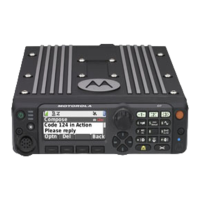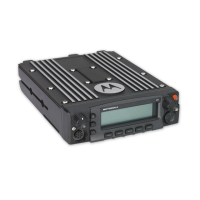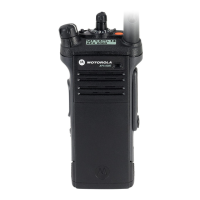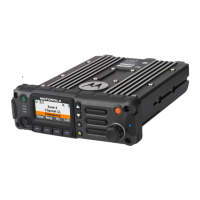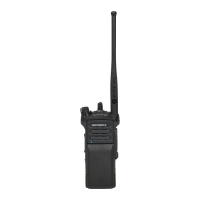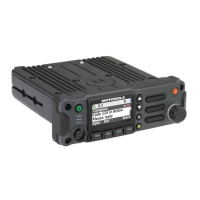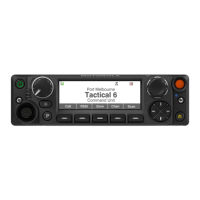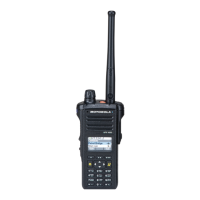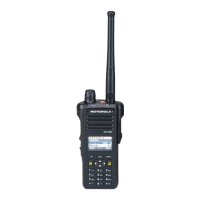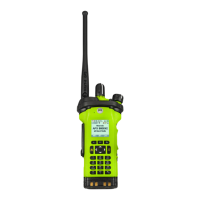3-22 Theory of Operation: Transceiver Board
3.1.4 Frequency Generation Unit (FGU)
The frequency-generation function is performed by several ICs; multiple voltage-controlled
oscillators (VCOs); and associated circuitry. The reference oscillator provides a frequency standard
to the Trident IC, which controls the VCOs via the port expander. There are also buffers that amplify
the VCO signal to the correct level for the next stage. Figure 3-21 below shows a block diagram of
the FGU Section.
VHF: Two VCOs are employed: one to generate the first RX LO and the other to generate the
transmit injection signals.
UHF1/UHF2: Two VCOs generate the first Rx LO and two VCOs generate the transmit-injection
signals.
700–800 MHz: Two VCOs generate the first RX LO and three VCOs generate the transmit-injection
signals.
NOTE: Refer to Table 8-1, “Transceiver Schematics and Board Overlays,” on page 8-1 for a listing of
FGU-related schematics that will aid in the following discussion.
Figure 3-21. Synthesizer Block Diagram
3.1.4.1 Reference Oscillator Y701
The radio's frequency stability and accuracy is derived from the Voltage-Controlled Temperature-
Compensated Crystal Oscillator (VCTCXO), Y701. This 16.8 MHz oscillator is controlled by the
voltage from the AUX_DAC pin of the Trident IC, U702, that can be programmed through a serial
peripheral interface (SPI). The oscillator output at pin 3 is coupled through capacitor C736 to the
Trident IC reference oscillator input. This reference is then passed through an internal buffer and is
then coupled to the external BJT buffer (comprised of U746 and supporting circuitry) via C739.
These buffers provide isolation for the 16.8 MHz output to the VOCON board and ABACUS IC.
Components L753 and C754 form a low-pass filter to reduce the harmonics of the 16.8 MHz.
TRIDENT IC
LOGIC
EXPANDER
LOOP
FILTER
PRESCALAR
BUFFER
16.8MHz
16.8MHz
BUFFER
PRE
BUFFER
2
TX LO
RX LO
TX
BUFFER
VHF DIVIDE-BY-2
2
ND
HARMONIC FILTER
VHF TX
UHF1/UHF2/7/800 TX
VHF/UHF1/UHF2/7/800 RX
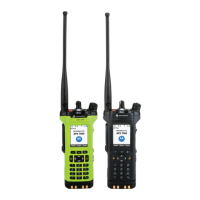
